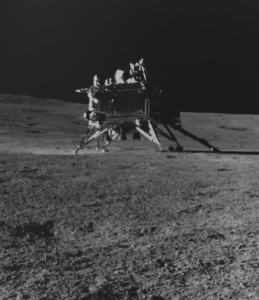NEW DELHI: The Vikram Lander, which is now on the moon’s south pole, just conducted a hop experiment successfully, which may excite scientific aficionados. According to ISRO, Vikram raised itself by around 40 cm and successfully touched down on Sunday at a distance of 30 to 40 cm. Vikram Lander outperformed its mission goals. It underwent a hop experiment successfully. It landed successfully at a distance of 30 to 40 cm after activating the engines as instructed and elevating itself by around 40 cm as anticipated, according to ISRO’s post on X. According to ISRO, the ‘kick-start’ will inspire future sample return and human missions to the moon, highlighting the significance of this event.ISRO reported that following the hop experiment, the ramp and lander payloads — ChaSTE and ILSA — folded back and successfully redeployed. “All systems performed nominally and are healthy,” it added. India made a huge step forward on August 23 when the Chandrayaan-3 lander module successfully touched down on the moon’s South Pole, making it the first nation to accomplish the historic achievement and putting an end to the disappointment over the Chandrayaan-2 crash landing four years earlier. Overall, India became the fourth nation to make a successful landing on the moon, following the US, China, and Russia. Following landing, the Pragyan rover and the Vikram Lander each had a specific duty to complete on the lunar surface, such as looking for sulphur and documenting the relative temperature.The lander and rover were to run for one lunar day after landing. 14 days on Earth are equivalent to one day on the Moon. The Pragyan rover has finished its tasks, according to ISRO, and has been safely parked and put into “sleep” mode. The battery is fully charged right now. The solar panel is set up to catch the light on September 22, 2023, when the next sunrise is anticipated. Keep the receiver on. I’m hoping for a productive start to another round of assignments! If not, it will remain there permanently as India’s lunar envoy, according to ISRO.

